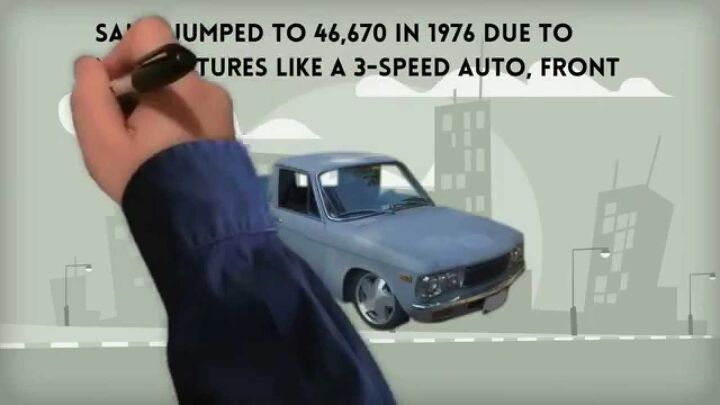#ChevyLuv
A Selective History Of Minitrucks, Part Two: The Empire Strikes Back, Then Gives Up
In Part One of this minitruckin’ history, we covered how the Big 3 provided their dealers with “captive import” minitrucks from Mazda, Isuzu, and Mitsubishi during the Seventies. By 1975 or thereabouts, both GM and Ford were convinced that the small-pickup market was not a fad and began digging their own products out of the parts bin.
The Chevrolet S-10/GMC S-15 was a sort of truck version of the A-body (later G-body) intermediate. While it’s not dimensionally identical to the older sedans, it’s possible to swap much of the running gear between those two vehicles, particularly ahead of the firewall. The Ford Ranger arrived a few months after the S-10, a few inches smaller in most dimensions and looking remarkably ungainly compared to its sleek GM competitor. Those of you who followed the minitrucking hobby in the Nineties will recall that the Ranger was conspicuous by its absence; “domestic” minitruckers were almost exclusively loyal to the S-10/S-15. Part of that was due to the Twin-I-Beam’s reluctance to accept a lowering kit and/or airbags, but much of it was the Ranger’s hokey, hick-ish appearance compared to the S-10.
So what did that mean for the captive import trucks?
A Selective History of Captive Minitrucks, Part One: When America Couldn't Compete
I was having a conversation with a female friend a few weeks ago and she admitted to having “fooled around” in no fewer than four different brands of minitrucks during the Nineties and Oughties. I suppose in her case that would be the Noughties — but that’s besides the point. I should also mention that the fourth “minitruck” was really a Colorado, and the incident in question happened fairly recently.
“There’s always some kind of stick shift in the way, in those little trucks, you know?” she said.
“Those are the little crosses that empowered young women have to bear,” was my response.
The conversation could have gone in any number of directions from there, but where it actually went was to A Brief Discussion Of Mini-Trucks In America, 1970-2010. I thought it might be a conversation worth having with all of you, as well, because it showcases a rather unique phenomenon in American automotive history.

















Recent Comments